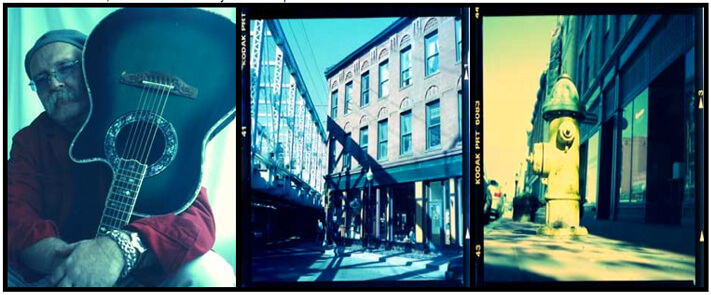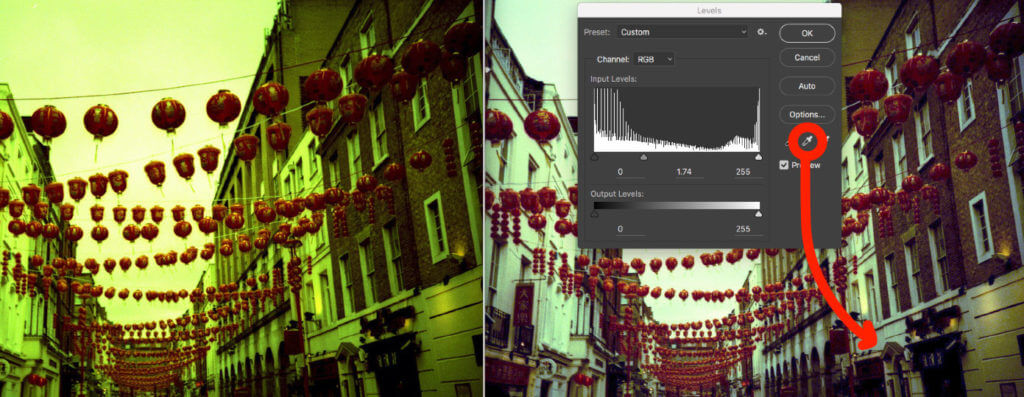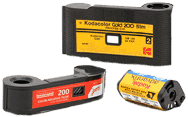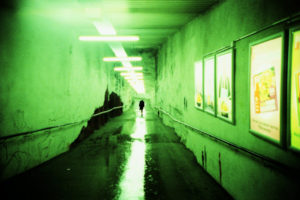Cross Processing Film – A complete guide
Cross Processing is intentionally processing film in the wrong chemicals, creating interesting and unpredictable color shifts and increased contrast. For example, cross processing would be shooting a roll of color slide film or E6 and developing it as if it were color negative film or C41 (or visa versa). The best thing about cross processing is the unpredictability of it, you never know what you’re gonna get, but that’s the fun of photography, and likely you shoot film.
Color slide film cross processing
Color slide film “Slides” or transparency film uses E-6 chemicals for processing.
Learn more about Slide Film Processing
E-6 => C-41: taking positive color slide film (E6) and processing it in color negative chemicals (C41). This is the most common type of cross processing. This typically creates increased contrast with strong color casts.

Color negative film cross processing
C41 => E6: taking color negative film (C41) and developing in slide chemicals (E6). You can expect muted, pastel colors with little contrast. You may want to increase contrast by asking the lab to push 2 or 3 stops.
Learn more about C-41 film developing

Photos: Laurent Butre
How to shoot for Cross Processing
Different Film have Different Results
The largest differences in the outcome of your cross processed photos have to do with the film you’re using.
Each film has its own unique look and characteristics and sometimes it can vary drastically. The most obvious difference in film is the color cast produced during development. Here are some color cast examples cross processing film is developed:
Cross Processing Exposure
Color Slide Film – Color slide film has a lower dynamic range than color negative film and when cross processing, it tends to boost the contrast between highlights and shadows. Becuase of this it’s important to properly expose shots. Because cross processing slide film tends to over expose the film, you may want to consider experimenting and under-exposing the film by about a stop.
To underexpose by one stop, you just have to set your ASA/ISO value to double what it should be (assuming that you have a light meter on your camera). So if you’re shooting with ASA100 film, set the camera to ASA200. This makes the camera “think” that you have a faster film loaded, so it lets in less light.
Color Negative Film – When cross processing color negative film, the results are typically muted, with pastel colors with little contrast. Because of this, you may want to increase contrast by asking the lab to push 2 or 3 stops.
Adjusting White Balance
Because cross processing can produce some very strong color shifts you may want to consider adjusting the white point. When you get your film processed and scanned, you can adjust digitally in Lightroom, Photoshop or other image application. Most applications have a white balance tool even with cross processed film scans. Just find something in the photo that “should” be a neutral gray and sample it with the tool. This will adjust the white balance for you, then you can fine-tune it from there. I usually like to leave a bit of color shift in my photos (and sometimes all of it) — if you go too far with the white balance adjustments, you’ll start to see weird colors showing up in those neutral gray or white areas.

For photos with a strong green color shift, increase your “tint” into the magenta region (or away from green). Depending on the film and the specific color shift, you may also need to adjust the “temperature” toward yellow or blue to take care of secondary color shifts left behind.
For photos with a strong red shift, move your “tint” into the green region (away from the magenta). Again, you may have to adjust the “temperature” to clean up the rest of the colors.
The same rules apply with yellow and blue color shifts — just move adjust the white balance in the opposite direction. So basically, you’re just evaluating the color shift of the photo, finding that color or combination of colors in your white balance adjustment, and compensating for it by negating the colors.
Our experienced staff have literally developed millions of E-6 film rolls, ensuring professional and reliable processing results every time! Learn more about our E-6 slide film developing.
Sources Used:
Epic Edits – Cross Processing Tips and Suggestions; http://blog.epicedits.com/2008/10/15/cross-processing-tips-and-suggestions/














 Gift Cards
Gift Cards Film Index
Film Index FAQ
FAQ Desktop Framed Prints
Desktop Framed Prints






